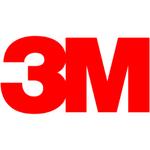Global Mobile Antivirus Market Overview
Mobile Antivirus Market size is projected to reach xxxx units by 2025 from an estimated xxxx unit in 2019, growing at a CAGR of xx% globally.Introspective Market Research provides the newest industry data about Mobile Antivirus Market and industry future trends, allowing you to identify the products and end users driving revenue growth and profitability. The Mobile Antivirus industry report lists the leading competitors and provides the insights strategic industry Analysis of the key factors influencing the market.
Scope of the Mobile Antivirus Market
The main goal of this report is to help users understand the Mobile Antivirus market in terms of its definition, segmentation, market potential, influential trends, and challenges facing the market. In-depth research and analysis took place while preparing the report. Readers will find this report very helpful to in-depth understanding of the market.Market Segmentation
Players Covered in Mobile Antivirus market are :
- McAfee
- Kaspersky
- Webroot Secure
- ESET
- Bitdefender
- F-Secure
- Trend Micro
- Lookout
- BullGuard
- NetQin
- QIHU360
- Tencent
| Mobile Antivirus Market - In-Deep Analysis Focusing on Market Share | |||
|---|---|---|---|
| Segmentations | by Type |
| |
| by Application |
| ||
| by Region |
| ||
Chapter 1: Introduction
1.1 Research Objectives
1.2 Research Methodology
1.3 Research Process
1.4 Scope and Coverage
1.4.1 Market Definition
1.4.2 Key Questions Answered
1.5 Market Segmentation
Chapter 2:Executive Summary
Chapter 3:Growth Opportunities By Segment
3.1 By Type
3.2 By Application
Chapter 4: Market Landscape
4.1 Porter's Five Forces Analysis
4.1.1 Bargaining Power of Supplier
4.1.2 Threat of New Entrants
4.1.3 Threat of Substitutes
4.1.4 Competitive Rivalry
4.1.5 Bargaining Power Among Buyers
4.2 Industry Value Chain Analysis
4.3 Market Dynamics
3.5.1 Drivers
3.5.2 Restraints
3.5.3 Opportunities
3.5.4 Challenges
4.4 Pestle Analysis
4.5 Technological Roadmap
4.6 Regulatory Landscape
4.7 SWOT Analysis
4.8 Price Trend Analysis
4.9 Patent Analysis
4.10 Analysis of the Impact of Covid-19
4.10.1 Impact on the Overall Market
4.10.2 Impact on the Supply Chain
4.10.3 Impact on the Key Manufacturers
4.10.4 Impact on the Pricing
Chapter 4: Mobile Antivirus Market by Type
4.1 Mobile Antivirus Market Overview Snapshot and Growth Engine
4.2 Mobile Antivirus Market Overview
4.3 Paid software
4.3.1 Introduction and Market Overview
4.3.2 Historic and Forecasted Market Size (2016-2028F)
4.3.3 Key Market Trends, Growth Factors and Opportunities
4.3.4 Paid software: Grographic Segmentation
4.4 Free Software
4.4.1 Introduction and Market Overview
4.4.2 Historic and Forecasted Market Size (2016-2028F)
4.4.3 Key Market Trends, Growth Factors and Opportunities
4.4.4 Free Software: Grographic Segmentation
Chapter 5: Mobile Antivirus Market by Application
5.1 Mobile Antivirus Market Overview Snapshot and Growth Engine
5.2 Mobile Antivirus Market Overview
5.3 Application A
5.3.1 Introduction and Market Overview
5.3.2 Historic and Forecasted Market Size (2016-2028F)
5.3.3 Key Market Trends, Growth Factors and Opportunities
5.3.4 Application A: Grographic Segmentation
5.4 Application B
5.4.1 Introduction and Market Overview
5.4.2 Historic and Forecasted Market Size (2016-2028F)
5.4.3 Key Market Trends, Growth Factors and Opportunities
5.4.4 Application B: Grographic Segmentation
5.5 Application C
5.5.1 Introduction and Market Overview
5.5.2 Historic and Forecasted Market Size (2016-2028F)
5.5.3 Key Market Trends, Growth Factors and Opportunities
5.5.4 Application C: Grographic Segmentation
Chapter 6: Company Profiles and Competitive Analysis
6.1 Competitive Landscape
6.1.1 Competitive Positioning
6.1.2 Mobile Antivirus Sales and Market Share By Players
6.1.3 Industry BCG Matrix
6.1.4 Ansoff Matrix
6.1.5 Mobile Antivirus Industry Concentration Ratio (CR5 and HHI)
6.1.6 Top 5 Mobile Antivirus Players Market Share
6.1.7 Mergers and Acquisitions
6.1.8 Business Strategies By Top Players
6.2 MCAFEE
6.2.1 Company Overview
6.2.2 Key Executives
6.2.3 Company Snapshot
6.2.4 Operating Business Segments
6.2.5 Product Portfolio
6.2.6 Business Performance
6.2.7 Key Strategic Moves and Recent Developments
6.2.8 SWOT Analysis
6.3 KASPERSKY
6.4 WEBROOT SECURE
6.5 ESET
6.6 BITDEFENDER
6.7 F-SECURE
6.8 TREND MICRO
6.9 LOOKOUT
6.10 BULLGUARD
6.11 NETQIN
6.12 QIHU360
6.13 TENCENT
Chapter 7: Global Mobile Antivirus Market Analysis, Insights and Forecast, 2016-2028
7.1 Market Overview
7.2 Historic and Forecasted Market Size By Type
7.2.1 Paid software
7.2.2 Free Software
7.3 Historic and Forecasted Market Size By Application
7.3.1 Application A
7.3.2 Application B
7.3.3 Application C
Chapter 8: North America Mobile Antivirus Market Analysis, Insights and Forecast, 2016-2028
8.1 Key Market Trends, Growth Factors and Opportunities
8.2 Impact of Covid-19
8.3 Key Players
8.4 Key Market Trends, Growth Factors and Opportunities
8.4 Historic and Forecasted Market Size By Type
8.4.1 Paid software
8.4.2 Free Software
8.5 Historic and Forecasted Market Size By Application
8.5.1 Application A
8.5.2 Application B
8.5.3 Application C
8.6 Historic and Forecast Market Size by Country
8.6.1 U.S.
8.6.2 Canada
8.6.3 Mexico
Chapter 9: Europe Mobile Antivirus Market Analysis, Insights and Forecast, 2016-2028
9.1 Key Market Trends, Growth Factors and Opportunities
9.2 Impact of Covid-19
9.3 Key Players
9.4 Key Market Trends, Growth Factors and Opportunities
9.4 Historic and Forecasted Market Size By Type
9.4.1 Paid software
9.4.2 Free Software
9.5 Historic and Forecasted Market Size By Application
9.5.1 Application A
9.5.2 Application B
9.5.3 Application C
9.6 Historic and Forecast Market Size by Country
9.6.1 Germany
9.6.2 U.K.
9.6.3 France
9.6.4 Italy
9.6.5 Russia
9.6.6 Spain
Chapter 10: Asia-Pacific Mobile Antivirus Market Analysis, Insights and Forecast, 2016-2028
10.1 Key Market Trends, Growth Factors and Opportunities
10.2 Impact of Covid-19
10.3 Key Players
10.4 Key Market Trends, Growth Factors and Opportunities
10.4 Historic and Forecasted Market Size By Type
10.4.1 Paid software
10.4.2 Free Software
10.5 Historic and Forecasted Market Size By Application
10.5.1 Application A
10.5.2 Application B
10.5.3 Application C
10.6 Historic and Forecast Market Size by Country
10.6.1 China
10.6.2 India
10.6.3 Japan
10.6.4 Southeast Asia
Chapter 11: South America Mobile Antivirus Market Analysis, Insights and Forecast, 2016-2028
11.1 Key Market Trends, Growth Factors and Opportunities
11.2 Impact of Covid-19
11.3 Key Players
11.4 Key Market Trends, Growth Factors and Opportunities
11.4 Historic and Forecasted Market Size By Type
11.4.1 Paid software
11.4.2 Free Software
11.5 Historic and Forecasted Market Size By Application
11.5.1 Application A
11.5.2 Application B
11.5.3 Application C
11.6 Historic and Forecast Market Size by Country
11.6.1 Brazil
11.6.2 Argentina
Chapter 12: Middle East & Africa Mobile Antivirus Market Analysis, Insights and Forecast, 2016-2028
12.1 Key Market Trends, Growth Factors and Opportunities
12.2 Impact of Covid-19
12.3 Key Players
12.4 Key Market Trends, Growth Factors and Opportunities
12.4 Historic and Forecasted Market Size By Type
12.4.1 Paid software
12.4.2 Free Software
12.5 Historic and Forecasted Market Size By Application
12.5.1 Application A
12.5.2 Application B
12.5.3 Application C
12.6 Historic and Forecast Market Size by Country
12.6.1 Saudi Arabia
12.6.2 South Africa
Chapter 13 Investment Analysis
Chapter 14 Analyst Viewpoint and Conclusion
1.1 Research Objectives
1.2 Research Methodology
1.3 Research Process
1.4 Scope and Coverage
1.4.1 Market Definition
1.4.2 Key Questions Answered
1.5 Market Segmentation
Chapter 2:Executive Summary
Chapter 3:Growth Opportunities By Segment
3.1 By Type
3.2 By Application
Chapter 4: Market Landscape
4.1 Porter's Five Forces Analysis
4.1.1 Bargaining Power of Supplier
4.1.2 Threat of New Entrants
4.1.3 Threat of Substitutes
4.1.4 Competitive Rivalry
4.1.5 Bargaining Power Among Buyers
4.2 Industry Value Chain Analysis
4.3 Market Dynamics
3.5.1 Drivers
3.5.2 Restraints
3.5.3 Opportunities
3.5.4 Challenges
4.4 Pestle Analysis
4.5 Technological Roadmap
4.6 Regulatory Landscape
4.7 SWOT Analysis
4.8 Price Trend Analysis
4.9 Patent Analysis
4.10 Analysis of the Impact of Covid-19
4.10.1 Impact on the Overall Market
4.10.2 Impact on the Supply Chain
4.10.3 Impact on the Key Manufacturers
4.10.4 Impact on the Pricing
Chapter 4: Mobile Antivirus Market by Type
4.1 Mobile Antivirus Market Overview Snapshot and Growth Engine
4.2 Mobile Antivirus Market Overview
4.3 Paid software
4.3.1 Introduction and Market Overview
4.3.2 Historic and Forecasted Market Size (2016-2028F)
4.3.3 Key Market Trends, Growth Factors and Opportunities
4.3.4 Paid software: Grographic Segmentation
4.4 Free Software
4.4.1 Introduction and Market Overview
4.4.2 Historic and Forecasted Market Size (2016-2028F)
4.4.3 Key Market Trends, Growth Factors and Opportunities
4.4.4 Free Software: Grographic Segmentation
Chapter 5: Mobile Antivirus Market by Application
5.1 Mobile Antivirus Market Overview Snapshot and Growth Engine
5.2 Mobile Antivirus Market Overview
5.3 Application A
5.3.1 Introduction and Market Overview
5.3.2 Historic and Forecasted Market Size (2016-2028F)
5.3.3 Key Market Trends, Growth Factors and Opportunities
5.3.4 Application A: Grographic Segmentation
5.4 Application B
5.4.1 Introduction and Market Overview
5.4.2 Historic and Forecasted Market Size (2016-2028F)
5.4.3 Key Market Trends, Growth Factors and Opportunities
5.4.4 Application B: Grographic Segmentation
5.5 Application C
5.5.1 Introduction and Market Overview
5.5.2 Historic and Forecasted Market Size (2016-2028F)
5.5.3 Key Market Trends, Growth Factors and Opportunities
5.5.4 Application C: Grographic Segmentation
Chapter 6: Company Profiles and Competitive Analysis
6.1 Competitive Landscape
6.1.1 Competitive Positioning
6.1.2 Mobile Antivirus Sales and Market Share By Players
6.1.3 Industry BCG Matrix
6.1.4 Ansoff Matrix
6.1.5 Mobile Antivirus Industry Concentration Ratio (CR5 and HHI)
6.1.6 Top 5 Mobile Antivirus Players Market Share
6.1.7 Mergers and Acquisitions
6.1.8 Business Strategies By Top Players
6.2 MCAFEE
6.2.1 Company Overview
6.2.2 Key Executives
6.2.3 Company Snapshot
6.2.4 Operating Business Segments
6.2.5 Product Portfolio
6.2.6 Business Performance
6.2.7 Key Strategic Moves and Recent Developments
6.2.8 SWOT Analysis
6.3 KASPERSKY
6.4 WEBROOT SECURE
6.5 ESET
6.6 BITDEFENDER
6.7 F-SECURE
6.8 TREND MICRO
6.9 LOOKOUT
6.10 BULLGUARD
6.11 NETQIN
6.12 QIHU360
6.13 TENCENT
Chapter 7: Global Mobile Antivirus Market Analysis, Insights and Forecast, 2016-2028
7.1 Market Overview
7.2 Historic and Forecasted Market Size By Type
7.2.1 Paid software
7.2.2 Free Software
7.3 Historic and Forecasted Market Size By Application
7.3.1 Application A
7.3.2 Application B
7.3.3 Application C
Chapter 8: North America Mobile Antivirus Market Analysis, Insights and Forecast, 2016-2028
8.1 Key Market Trends, Growth Factors and Opportunities
8.2 Impact of Covid-19
8.3 Key Players
8.4 Key Market Trends, Growth Factors and Opportunities
8.4 Historic and Forecasted Market Size By Type
8.4.1 Paid software
8.4.2 Free Software
8.5 Historic and Forecasted Market Size By Application
8.5.1 Application A
8.5.2 Application B
8.5.3 Application C
8.6 Historic and Forecast Market Size by Country
8.6.1 U.S.
8.6.2 Canada
8.6.3 Mexico
Chapter 9: Europe Mobile Antivirus Market Analysis, Insights and Forecast, 2016-2028
9.1 Key Market Trends, Growth Factors and Opportunities
9.2 Impact of Covid-19
9.3 Key Players
9.4 Key Market Trends, Growth Factors and Opportunities
9.4 Historic and Forecasted Market Size By Type
9.4.1 Paid software
9.4.2 Free Software
9.5 Historic and Forecasted Market Size By Application
9.5.1 Application A
9.5.2 Application B
9.5.3 Application C
9.6 Historic and Forecast Market Size by Country
9.6.1 Germany
9.6.2 U.K.
9.6.3 France
9.6.4 Italy
9.6.5 Russia
9.6.6 Spain
Chapter 10: Asia-Pacific Mobile Antivirus Market Analysis, Insights and Forecast, 2016-2028
10.1 Key Market Trends, Growth Factors and Opportunities
10.2 Impact of Covid-19
10.3 Key Players
10.4 Key Market Trends, Growth Factors and Opportunities
10.4 Historic and Forecasted Market Size By Type
10.4.1 Paid software
10.4.2 Free Software
10.5 Historic and Forecasted Market Size By Application
10.5.1 Application A
10.5.2 Application B
10.5.3 Application C
10.6 Historic and Forecast Market Size by Country
10.6.1 China
10.6.2 India
10.6.3 Japan
10.6.4 Southeast Asia
Chapter 11: South America Mobile Antivirus Market Analysis, Insights and Forecast, 2016-2028
11.1 Key Market Trends, Growth Factors and Opportunities
11.2 Impact of Covid-19
11.3 Key Players
11.4 Key Market Trends, Growth Factors and Opportunities
11.4 Historic and Forecasted Market Size By Type
11.4.1 Paid software
11.4.2 Free Software
11.5 Historic and Forecasted Market Size By Application
11.5.1 Application A
11.5.2 Application B
11.5.3 Application C
11.6 Historic and Forecast Market Size by Country
11.6.1 Brazil
11.6.2 Argentina
Chapter 12: Middle East & Africa Mobile Antivirus Market Analysis, Insights and Forecast, 2016-2028
12.1 Key Market Trends, Growth Factors and Opportunities
12.2 Impact of Covid-19
12.3 Key Players
12.4 Key Market Trends, Growth Factors and Opportunities
12.4 Historic and Forecasted Market Size By Type
12.4.1 Paid software
12.4.2 Free Software
12.5 Historic and Forecasted Market Size By Application
12.5.1 Application A
12.5.2 Application B
12.5.3 Application C
12.6 Historic and Forecast Market Size by Country
12.6.1 Saudi Arabia
12.6.2 South Africa
Chapter 13 Investment Analysis
Chapter 14 Analyst Viewpoint and Conclusion
| Mobile Antivirus Market - In-Deep Analysis Focusing on Market Share | |||
|---|---|---|---|
| Segmentations | by Type |
| |
| by Application |
| ||
| by Region |
| ||
LIST OF TABLES
TABLE 001. EXECUTIVE SUMMARY
TABLE 002. MOBILE ANTIVIRUS MARKET BARGAINING POWER OF SUPPLIERS
TABLE 003. MOBILE ANTIVIRUS MARKET BARGAINING POWER OF CUSTOMERS
TABLE 004. MOBILE ANTIVIRUS MARKET COMPETITIVE RIVALRY
TABLE 005. MOBILE ANTIVIRUS MARKET THREAT OF NEW ENTRANTS
TABLE 006. MOBILE ANTIVIRUS MARKET THREAT OF SUBSTITUTES
TABLE 007. MOBILE ANTIVIRUS MARKET BY TYPE
TABLE 008. PAID SOFTWARE MARKET OVERVIEW (2016-2028)
TABLE 009. FREE SOFTWARE MARKET OVERVIEW (2016-2028)
TABLE 010. MOBILE ANTIVIRUS MARKET BY APPLICATION
TABLE 011. APPLICATION A MARKET OVERVIEW (2016-2028)
TABLE 012. APPLICATION B MARKET OVERVIEW (2016-2028)
TABLE 013. APPLICATION C MARKET OVERVIEW (2016-2028)
TABLE 014. NORTH AMERICA MOBILE ANTIVIRUS MARKET, BY TYPE (2016-2028)
TABLE 015. NORTH AMERICA MOBILE ANTIVIRUS MARKET, BY APPLICATION (2016-2028)
TABLE 016. N MOBILE ANTIVIRUS MARKET, BY COUNTRY (2016-2028)
TABLE 017. EUROPE MOBILE ANTIVIRUS MARKET, BY TYPE (2016-2028)
TABLE 018. EUROPE MOBILE ANTIVIRUS MARKET, BY APPLICATION (2016-2028)
TABLE 019. MOBILE ANTIVIRUS MARKET, BY COUNTRY (2016-2028)
TABLE 020. ASIA PACIFIC MOBILE ANTIVIRUS MARKET, BY TYPE (2016-2028)
TABLE 021. ASIA PACIFIC MOBILE ANTIVIRUS MARKET, BY APPLICATION (2016-2028)
TABLE 022. MOBILE ANTIVIRUS MARKET, BY COUNTRY (2016-2028)
TABLE 023. MIDDLE EAST & AFRICA MOBILE ANTIVIRUS MARKET, BY TYPE (2016-2028)
TABLE 024. MIDDLE EAST & AFRICA MOBILE ANTIVIRUS MARKET, BY APPLICATION (2016-2028)
TABLE 025. MOBILE ANTIVIRUS MARKET, BY COUNTRY (2016-2028)
TABLE 026. SOUTH AMERICA MOBILE ANTIVIRUS MARKET, BY TYPE (2016-2028)
TABLE 027. SOUTH AMERICA MOBILE ANTIVIRUS MARKET, BY APPLICATION (2016-2028)
TABLE 028. MOBILE ANTIVIRUS MARKET, BY COUNTRY (2016-2028)
TABLE 029. MCAFEE: SNAPSHOT
TABLE 030. MCAFEE: BUSINESS PERFORMANCE
TABLE 031. MCAFEE: PRODUCT PORTFOLIO
TABLE 032. MCAFEE: KEY STRATEGIC MOVES AND DEVELOPMENTS
TABLE 032. KASPERSKY: SNAPSHOT
TABLE 033. KASPERSKY: BUSINESS PERFORMANCE
TABLE 034. KASPERSKY: PRODUCT PORTFOLIO
TABLE 035. KASPERSKY: KEY STRATEGIC MOVES AND DEVELOPMENTS
TABLE 035. WEBROOT SECURE: SNAPSHOT
TABLE 036. WEBROOT SECURE: BUSINESS PERFORMANCE
TABLE 037. WEBROOT SECURE: PRODUCT PORTFOLIO
TABLE 038. WEBROOT SECURE: KEY STRATEGIC MOVES AND DEVELOPMENTS
TABLE 038. ESET: SNAPSHOT
TABLE 039. ESET: BUSINESS PERFORMANCE
TABLE 040. ESET: PRODUCT PORTFOLIO
TABLE 041. ESET: KEY STRATEGIC MOVES AND DEVELOPMENTS
TABLE 041. BITDEFENDER: SNAPSHOT
TABLE 042. BITDEFENDER: BUSINESS PERFORMANCE
TABLE 043. BITDEFENDER: PRODUCT PORTFOLIO
TABLE 044. BITDEFENDER: KEY STRATEGIC MOVES AND DEVELOPMENTS
TABLE 044. F-SECURE: SNAPSHOT
TABLE 045. F-SECURE: BUSINESS PERFORMANCE
TABLE 046. F-SECURE: PRODUCT PORTFOLIO
TABLE 047. F-SECURE: KEY STRATEGIC MOVES AND DEVELOPMENTS
TABLE 047. TREND MICRO: SNAPSHOT
TABLE 048. TREND MICRO: BUSINESS PERFORMANCE
TABLE 049. TREND MICRO: PRODUCT PORTFOLIO
TABLE 050. TREND MICRO: KEY STRATEGIC MOVES AND DEVELOPMENTS
TABLE 050. LOOKOUT: SNAPSHOT
TABLE 051. LOOKOUT: BUSINESS PERFORMANCE
TABLE 052. LOOKOUT: PRODUCT PORTFOLIO
TABLE 053. LOOKOUT: KEY STRATEGIC MOVES AND DEVELOPMENTS
TABLE 053. BULLGUARD: SNAPSHOT
TABLE 054. BULLGUARD: BUSINESS PERFORMANCE
TABLE 055. BULLGUARD: PRODUCT PORTFOLIO
TABLE 056. BULLGUARD: KEY STRATEGIC MOVES AND DEVELOPMENTS
TABLE 056. NETQIN: SNAPSHOT
TABLE 057. NETQIN: BUSINESS PERFORMANCE
TABLE 058. NETQIN: PRODUCT PORTFOLIO
TABLE 059. NETQIN: KEY STRATEGIC MOVES AND DEVELOPMENTS
TABLE 059. QIHU360: SNAPSHOT
TABLE 060. QIHU360: BUSINESS PERFORMANCE
TABLE 061. QIHU360: PRODUCT PORTFOLIO
TABLE 062. QIHU360: KEY STRATEGIC MOVES AND DEVELOPMENTS
TABLE 062. TENCENT: SNAPSHOT
TABLE 063. TENCENT: BUSINESS PERFORMANCE
TABLE 064. TENCENT: PRODUCT PORTFOLIO
TABLE 065. TENCENT: KEY STRATEGIC MOVES AND DEVELOPMENTS
LIST OF FIGURES
FIGURE 001. YEARS CONSIDERED FOR ANALYSIS
FIGURE 002. SCOPE OF THE STUDY
FIGURE 003. MOBILE ANTIVIRUS MARKET OVERVIEW BY REGIONS
FIGURE 004. PORTER'S FIVE FORCES ANALYSIS
FIGURE 005. BARGAINING POWER OF SUPPLIERS
FIGURE 006. COMPETITIVE RIVALRYFIGURE 007. THREAT OF NEW ENTRANTS
FIGURE 008. THREAT OF SUBSTITUTES
FIGURE 009. VALUE CHAIN ANALYSIS
FIGURE 010. PESTLE ANALYSIS
FIGURE 011. MOBILE ANTIVIRUS MARKET OVERVIEW BY TYPE
FIGURE 012. PAID SOFTWARE MARKET OVERVIEW (2016-2028)
FIGURE 013. FREE SOFTWARE MARKET OVERVIEW (2016-2028)
FIGURE 014. MOBILE ANTIVIRUS MARKET OVERVIEW BY APPLICATION
FIGURE 015. APPLICATION A MARKET OVERVIEW (2016-2028)
FIGURE 016. APPLICATION B MARKET OVERVIEW (2016-2028)
FIGURE 017. APPLICATION C MARKET OVERVIEW (2016-2028)
FIGURE 018. NORTH AMERICA MOBILE ANTIVIRUS MARKET OVERVIEW BY COUNTRY (2016-2028)
FIGURE 019. EUROPE MOBILE ANTIVIRUS MARKET OVERVIEW BY COUNTRY (2016-2028)
FIGURE 020. ASIA PACIFIC MOBILE ANTIVIRUS MARKET OVERVIEW BY COUNTRY (2016-2028)
FIGURE 021. MIDDLE EAST & AFRICA MOBILE ANTIVIRUS MARKET OVERVIEW BY COUNTRY (2016-2028)
FIGURE 022. SOUTH AMERICA MOBILE ANTIVIRUS MARKET OVERVIEW BY COUNTRY (2016-2028)
TABLE 001. EXECUTIVE SUMMARY
TABLE 002. MOBILE ANTIVIRUS MARKET BARGAINING POWER OF SUPPLIERS
TABLE 003. MOBILE ANTIVIRUS MARKET BARGAINING POWER OF CUSTOMERS
TABLE 004. MOBILE ANTIVIRUS MARKET COMPETITIVE RIVALRY
TABLE 005. MOBILE ANTIVIRUS MARKET THREAT OF NEW ENTRANTS
TABLE 006. MOBILE ANTIVIRUS MARKET THREAT OF SUBSTITUTES
TABLE 007. MOBILE ANTIVIRUS MARKET BY TYPE
TABLE 008. PAID SOFTWARE MARKET OVERVIEW (2016-2028)
TABLE 009. FREE SOFTWARE MARKET OVERVIEW (2016-2028)
TABLE 010. MOBILE ANTIVIRUS MARKET BY APPLICATION
TABLE 011. APPLICATION A MARKET OVERVIEW (2016-2028)
TABLE 012. APPLICATION B MARKET OVERVIEW (2016-2028)
TABLE 013. APPLICATION C MARKET OVERVIEW (2016-2028)
TABLE 014. NORTH AMERICA MOBILE ANTIVIRUS MARKET, BY TYPE (2016-2028)
TABLE 015. NORTH AMERICA MOBILE ANTIVIRUS MARKET, BY APPLICATION (2016-2028)
TABLE 016. N MOBILE ANTIVIRUS MARKET, BY COUNTRY (2016-2028)
TABLE 017. EUROPE MOBILE ANTIVIRUS MARKET, BY TYPE (2016-2028)
TABLE 018. EUROPE MOBILE ANTIVIRUS MARKET, BY APPLICATION (2016-2028)
TABLE 019. MOBILE ANTIVIRUS MARKET, BY COUNTRY (2016-2028)
TABLE 020. ASIA PACIFIC MOBILE ANTIVIRUS MARKET, BY TYPE (2016-2028)
TABLE 021. ASIA PACIFIC MOBILE ANTIVIRUS MARKET, BY APPLICATION (2016-2028)
TABLE 022. MOBILE ANTIVIRUS MARKET, BY COUNTRY (2016-2028)
TABLE 023. MIDDLE EAST & AFRICA MOBILE ANTIVIRUS MARKET, BY TYPE (2016-2028)
TABLE 024. MIDDLE EAST & AFRICA MOBILE ANTIVIRUS MARKET, BY APPLICATION (2016-2028)
TABLE 025. MOBILE ANTIVIRUS MARKET, BY COUNTRY (2016-2028)
TABLE 026. SOUTH AMERICA MOBILE ANTIVIRUS MARKET, BY TYPE (2016-2028)
TABLE 027. SOUTH AMERICA MOBILE ANTIVIRUS MARKET, BY APPLICATION (2016-2028)
TABLE 028. MOBILE ANTIVIRUS MARKET, BY COUNTRY (2016-2028)
TABLE 029. MCAFEE: SNAPSHOT
TABLE 030. MCAFEE: BUSINESS PERFORMANCE
TABLE 031. MCAFEE: PRODUCT PORTFOLIO
TABLE 032. MCAFEE: KEY STRATEGIC MOVES AND DEVELOPMENTS
TABLE 032. KASPERSKY: SNAPSHOT
TABLE 033. KASPERSKY: BUSINESS PERFORMANCE
TABLE 034. KASPERSKY: PRODUCT PORTFOLIO
TABLE 035. KASPERSKY: KEY STRATEGIC MOVES AND DEVELOPMENTS
TABLE 035. WEBROOT SECURE: SNAPSHOT
TABLE 036. WEBROOT SECURE: BUSINESS PERFORMANCE
TABLE 037. WEBROOT SECURE: PRODUCT PORTFOLIO
TABLE 038. WEBROOT SECURE: KEY STRATEGIC MOVES AND DEVELOPMENTS
TABLE 038. ESET: SNAPSHOT
TABLE 039. ESET: BUSINESS PERFORMANCE
TABLE 040. ESET: PRODUCT PORTFOLIO
TABLE 041. ESET: KEY STRATEGIC MOVES AND DEVELOPMENTS
TABLE 041. BITDEFENDER: SNAPSHOT
TABLE 042. BITDEFENDER: BUSINESS PERFORMANCE
TABLE 043. BITDEFENDER: PRODUCT PORTFOLIO
TABLE 044. BITDEFENDER: KEY STRATEGIC MOVES AND DEVELOPMENTS
TABLE 044. F-SECURE: SNAPSHOT
TABLE 045. F-SECURE: BUSINESS PERFORMANCE
TABLE 046. F-SECURE: PRODUCT PORTFOLIO
TABLE 047. F-SECURE: KEY STRATEGIC MOVES AND DEVELOPMENTS
TABLE 047. TREND MICRO: SNAPSHOT
TABLE 048. TREND MICRO: BUSINESS PERFORMANCE
TABLE 049. TREND MICRO: PRODUCT PORTFOLIO
TABLE 050. TREND MICRO: KEY STRATEGIC MOVES AND DEVELOPMENTS
TABLE 050. LOOKOUT: SNAPSHOT
TABLE 051. LOOKOUT: BUSINESS PERFORMANCE
TABLE 052. LOOKOUT: PRODUCT PORTFOLIO
TABLE 053. LOOKOUT: KEY STRATEGIC MOVES AND DEVELOPMENTS
TABLE 053. BULLGUARD: SNAPSHOT
TABLE 054. BULLGUARD: BUSINESS PERFORMANCE
TABLE 055. BULLGUARD: PRODUCT PORTFOLIO
TABLE 056. BULLGUARD: KEY STRATEGIC MOVES AND DEVELOPMENTS
TABLE 056. NETQIN: SNAPSHOT
TABLE 057. NETQIN: BUSINESS PERFORMANCE
TABLE 058. NETQIN: PRODUCT PORTFOLIO
TABLE 059. NETQIN: KEY STRATEGIC MOVES AND DEVELOPMENTS
TABLE 059. QIHU360: SNAPSHOT
TABLE 060. QIHU360: BUSINESS PERFORMANCE
TABLE 061. QIHU360: PRODUCT PORTFOLIO
TABLE 062. QIHU360: KEY STRATEGIC MOVES AND DEVELOPMENTS
TABLE 062. TENCENT: SNAPSHOT
TABLE 063. TENCENT: BUSINESS PERFORMANCE
TABLE 064. TENCENT: PRODUCT PORTFOLIO
TABLE 065. TENCENT: KEY STRATEGIC MOVES AND DEVELOPMENTS
LIST OF FIGURES
FIGURE 001. YEARS CONSIDERED FOR ANALYSIS
FIGURE 002. SCOPE OF THE STUDY
FIGURE 003. MOBILE ANTIVIRUS MARKET OVERVIEW BY REGIONS
FIGURE 004. PORTER'S FIVE FORCES ANALYSIS
FIGURE 005. BARGAINING POWER OF SUPPLIERS
FIGURE 006. COMPETITIVE RIVALRYFIGURE 007. THREAT OF NEW ENTRANTS
FIGURE 008. THREAT OF SUBSTITUTES
FIGURE 009. VALUE CHAIN ANALYSIS
FIGURE 010. PESTLE ANALYSIS
FIGURE 011. MOBILE ANTIVIRUS MARKET OVERVIEW BY TYPE
FIGURE 012. PAID SOFTWARE MARKET OVERVIEW (2016-2028)
FIGURE 013. FREE SOFTWARE MARKET OVERVIEW (2016-2028)
FIGURE 014. MOBILE ANTIVIRUS MARKET OVERVIEW BY APPLICATION
FIGURE 015. APPLICATION A MARKET OVERVIEW (2016-2028)
FIGURE 016. APPLICATION B MARKET OVERVIEW (2016-2028)
FIGURE 017. APPLICATION C MARKET OVERVIEW (2016-2028)
FIGURE 018. NORTH AMERICA MOBILE ANTIVIRUS MARKET OVERVIEW BY COUNTRY (2016-2028)
FIGURE 019. EUROPE MOBILE ANTIVIRUS MARKET OVERVIEW BY COUNTRY (2016-2028)
FIGURE 020. ASIA PACIFIC MOBILE ANTIVIRUS MARKET OVERVIEW BY COUNTRY (2016-2028)
FIGURE 021. MIDDLE EAST & AFRICA MOBILE ANTIVIRUS MARKET OVERVIEW BY COUNTRY (2016-2028)
FIGURE 022. SOUTH AMERICA MOBILE ANTIVIRUS MARKET OVERVIEW BY COUNTRY (2016-2028)
Frequently Asked Questions :
What would be forecast period in the market research report?
The forecast period in the market research report is 2021-2025.
Who are the key players in Mobile Antivirus market?
The key players mentioned are McAfee, Kaspersky, Webroot Secure, ESET, Bitdefender, F-Secure, Trend Micro, Lookout, BullGuard, NetQin, QIHU360, Tencent.
What are the segments of Mobile Antivirus market?
The Mobile Antivirus market is segmented into application type, product type and region. By Application type, the market is categorized into Application A, Application B, Application C. By product type, it is classified into Paid software, Free Software and others. By region, it is analysed across North America (U.S.; Canada; Mexico), Europe (Germany; U.K.; France; Italy; Russia; Spain etc.), Asia-Pacific (China; India; Japan; Southeast Asia etc.), South America (Brazil; Argentina etc.), Middle East & Africa (Saudi Arabia; South Africa etc.).
What is the Mobile Antivirus market?
Mobile Antivirus Market size is projected to reach xxxx units by 2025 from an estimated xxxx unit in 2020, growing at a CAGR of xx% globally.
How big is the Mobile Antivirus market?
The global Mobile Antivirus market size was estimated at USD XX billion in 2020 and is expected to reach USD XX billion in 2025.


































